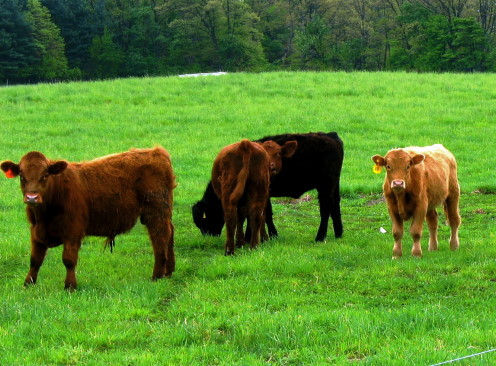
Agricultural News
Beef Industry in 2012 Holds Both Opportunities and Challenges
Mon, 31 Oct 2011 13:56:02 CDT
 The future of the beef industry is filled with both opportunities and challenges due to the 2011 drought in the Southern Plains, high price of grains, volatility in the commodity markets and fewer dollars available for research and education. According to Steve Swigert, Ag Consultant at the Noble Foundation, the consolidation of the industry will continue with more beef produced by fewer producers and with fewer cows. Supply chains will continue to be more and more prevalent and, in general, the beef industry will have fewer participants. We are already seeing this trend as the largest 10 percent of the cow-calf producers raise 54 percent of the cows, the largest 2 percent of the feedyard ownership groups feed 86 percent of the fed cattle and the three largest packers harvest 82 percent of the fed cattle.
The future of the beef industry is filled with both opportunities and challenges due to the 2011 drought in the Southern Plains, high price of grains, volatility in the commodity markets and fewer dollars available for research and education. According to Steve Swigert, Ag Consultant at the Noble Foundation, the consolidation of the industry will continue with more beef produced by fewer producers and with fewer cows. Supply chains will continue to be more and more prevalent and, in general, the beef industry will have fewer participants. We are already seeing this trend as the largest 10 percent of the cow-calf producers raise 54 percent of the cows, the largest 2 percent of the feedyard ownership groups feed 86 percent of the fed cattle and the three largest packers harvest 82 percent of the fed cattle.
In the second half of 2011, drought conditions have caused historic reductions in cow numbers across Oklahoma and Texas, and there is practically zero stocker grazing expected due to the lack of wheat. Even though relocation to northern grass has kept some cows in production, many went to slaughter. With Oklahoma and Texas comprising approximately 23 percent of the U.S. cow herd prior to the drought, a significant reduction of cow numbers in the Southern Great Plains could lead to the reduction of U.S. cow numbers to 30 million cows or less.
In addition, when the cow herd starts rebuilding, heifers normally fed will not be available, so the feedyards will have more trouble keeping facilities full. This will result in a decrease in the amount of beef produced.
What does this mean for the producer in the Southern Great Plains when it does rain and the grass returns? It means that the price of cattle will go up if demand for beef continues at present levels, both in the U.S. and in the export market. Generally speaking, producers in the Southern Great Plains can be placed in one of two categories:
- For those operations able to retain cows, the price of calves should be at levels significantly higher than in early 2011 when 400- to 500-pound steer calves sold for $170 per cwt. For stocker operations, the price relationship between calf value and feeder value should still allow for value of gain to exceed $1 per pound with price opportunities much higher than that when markets fluctuate. The challenge will be to maintain production costs so that profits can be attained.
- For operations forced to destock, the price of replacement cows will be at historical highs; the value of gain for stocker cattle will be extremely important in determining the viability and profitability of stocker enterprises, and there will be a feedyard contraction. It will mean that ranches will not be fully restocked with cows, thus making it crucial to explore other enterprises to maintain ranch profitability. Also, the availability of capital will be of greater importance since the cost of cattle, both for cows purchased for a cow-calf operation or calves for a stocker operation, will be higher.
The only constant for the beef industry in the next few years is there will be change - changes to number of producers, number of feedyards, where the cattle are located, cost of the cattle, the value of gain and the swings between price cycle highs and lows. For the astute producer, those changes mean opportunities. Others, however, will find it a challenge to stay in business.
Our thanks to the Noble Foundation and Steve Swigert for providing this article on the beef industry in 2012.
Click here for more Ag News and Views from the Noble Foundation.
WebReadyTM Powered by WireReady® NSI
Top Agricultural News
More Headlines...



















